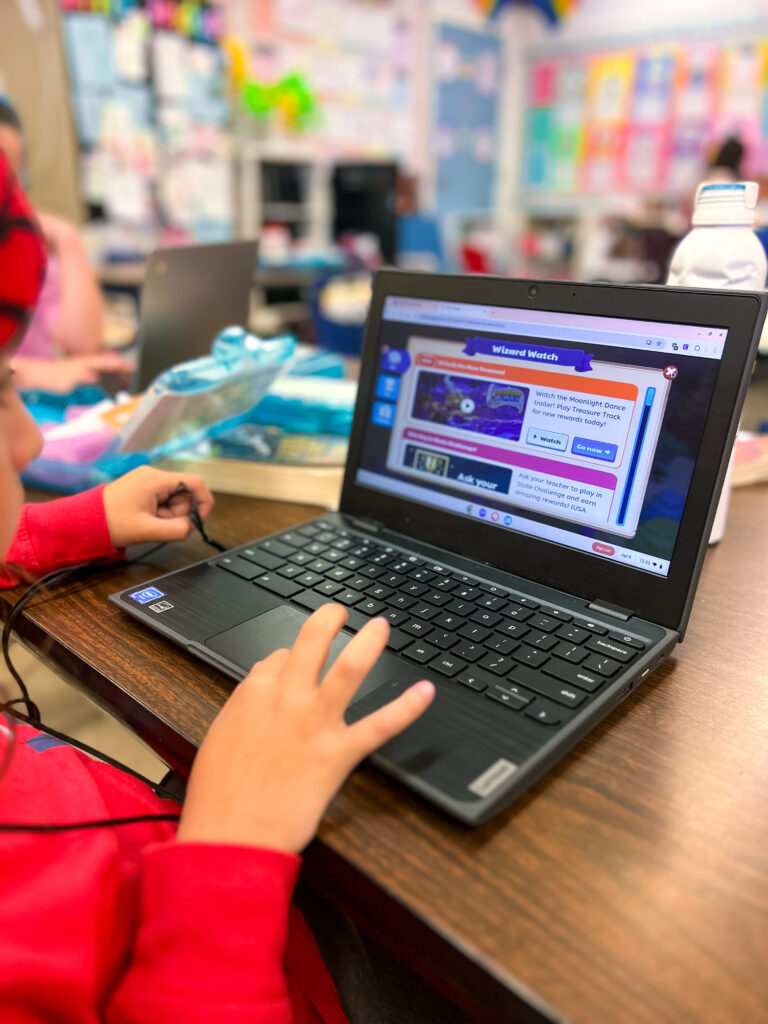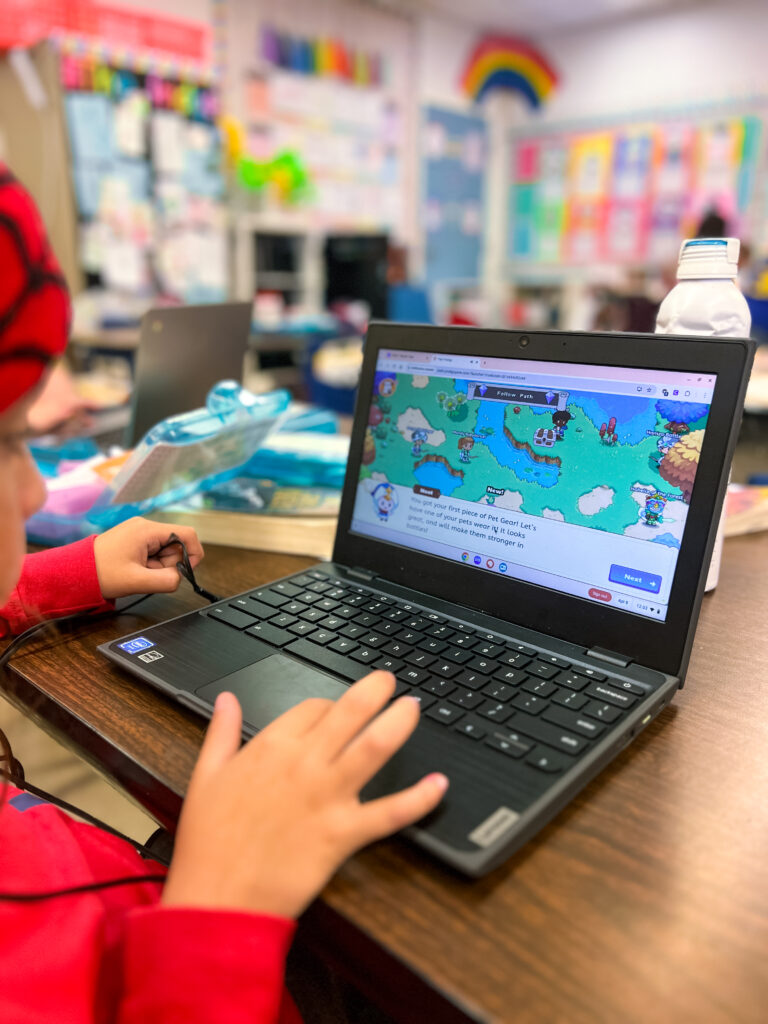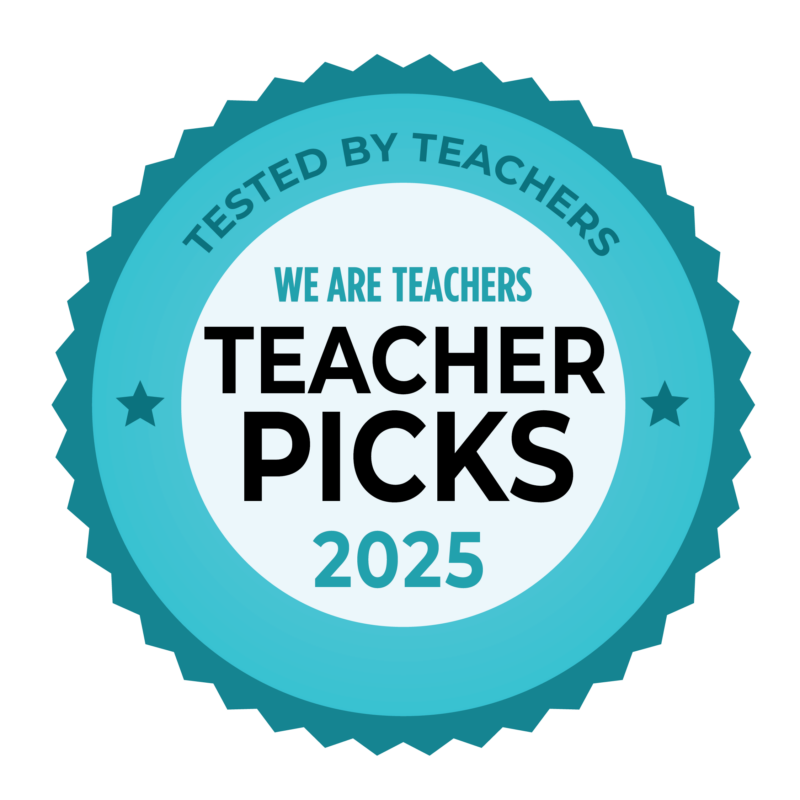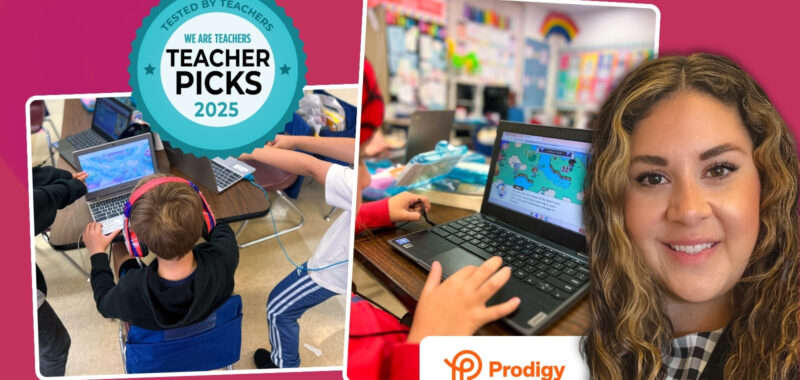Looking for a fun, interactive way to align math practice with your curriculum? Prodigy is a free, engaging and curriculum-aligned math platform for students in grades 1–8 that adapts to each student’s learning needs, offering personalized practice that helps reinforce key concepts in an exciting way. First grade teacher Kellie Barragan says it’s a game changer in her classroom. “My students absolutely love Prodigy. They’re motivated, excited, and don’t even realize they’re learning!”
Whether you’re using it during center time, as extra practice at home, or for test prep, Prodigy keeps students engaged while reinforcing skills they need to succeed. Here’s why Prodigy is our latest Teacher Pick and why Kellie believes it’s a must-have tool for any classroom.
What grades and subjects do you think Prodigy works best for?
I think Prodigy is great for children around 6 years old up to middle school age, maybe up to age 12 or so. I believe Prodigy works well for both math and language arts because it’s so engaging. Students feel like they’re playing a video game—one they’d choose to play on their own, even outside of school.
Tell us about how you used Prodigy in your classroom.

First, I assign all students the diagnostic placement assessment. Then, I allow Prodigy to adapt to the individual needs of each student based on their areas of growth. I have learning centers three times a week. During center time, students always have one rotation where they play Prodigy for 10 to 15 minutes. We also have “technology time” on Thursdays, where students can play a variety of academic games for about 25 to 30 minutes. Prodigy is one of the options, and it’s a very popular choice!
I send home login information with my students and set up their Clever accounts so they can access and play Prodigy at home for extra practice. Over school breaks, I encourage my students and their families to continue using Prodigy for learning. I send reminder messages about this resource. Lastly, if I notice a skill that students need extra practice with, I assign that specific skill (e.g., place value) as a challenge or assignment.
I haven’t done it yet, but I plan to use the “Quick Quiz” feature the day before a math test. It would be a fun and engaging way to review our content.
How easy was Prodigy to use and implement in your classroom?
Prodigy was so easy to implement in my classroom. I just added it into my Clever account, imported my class list from Google Classroom, assigned the diagnostic assessment, and we were ready to go. It probably took less than 5 minutes to set up. Then, I just had to show my students what the Prodigy icon looked like for them to find it in Clever, and that was it!
Does this product align with any specific standards or curriculum guidelines that you know of?
In my classroom, we use Prodigy for math practice, and I’ve seen my students engage with games that align with many of the standards I teach. It covers 1st grade Common Core standards, including operations and algebraic thinking, where students solve problems with addition and subtraction, and understanding place value for adding and subtracting. Prodigy also supports measurement and data standards like measuring lengths, telling time, and interpreting data. These are just a few of the standards I’ve observed it addressing in class.
How did your students react to Prodigy?

The first day I introduced Prodigy in my classroom, it took students about a minute to decide they loved it. I heard exclamations like, “I like this one!” and “Can we play this again tomorrow?!” That afternoon, after students went home, I received multiple parent messages asking how their child could access the math game with “the orange P” icon to play at home. As soon as I informed families that Prodigy had been added to our Clever account, I noticed the number of correct answers on my teacher page increase.
What makes Prodigy special or unique compared to other math resources you’ve used?
I was absolutely floored by how much my students enjoyed Prodigy from the very minute they began to use this game. Prodigy is a time-saving, standards-aligned instructional tool that engages students with gamified learning they beg to play. As a teacher who has a lot of experience in instructing children of a primary age, I understand how important play-based learning can be for student success. Anytime I can “trick” kids into learning, I’m all for it!
What were the top two features you liked most about Prodigy?

I love how Prodigy automatically differentiates instruction for each student based on their performance on the diagnostic assessment. This ensures that target areas are addressed and provides extra practice to boost students’ scores and performance. I also appreciate the robust reporting features, which help me understand both individual and class-level performance. These reports allow me to customize lesson plans for both whole-group and small-group math instruction.
Check out Kellie’s video review:

Teacher Picks is a sponsored program available from We Are Teachers. All opinions shared in the review are honest and based on the teacher’s direct experience. To learn more about our guidelines and review process, click here.

